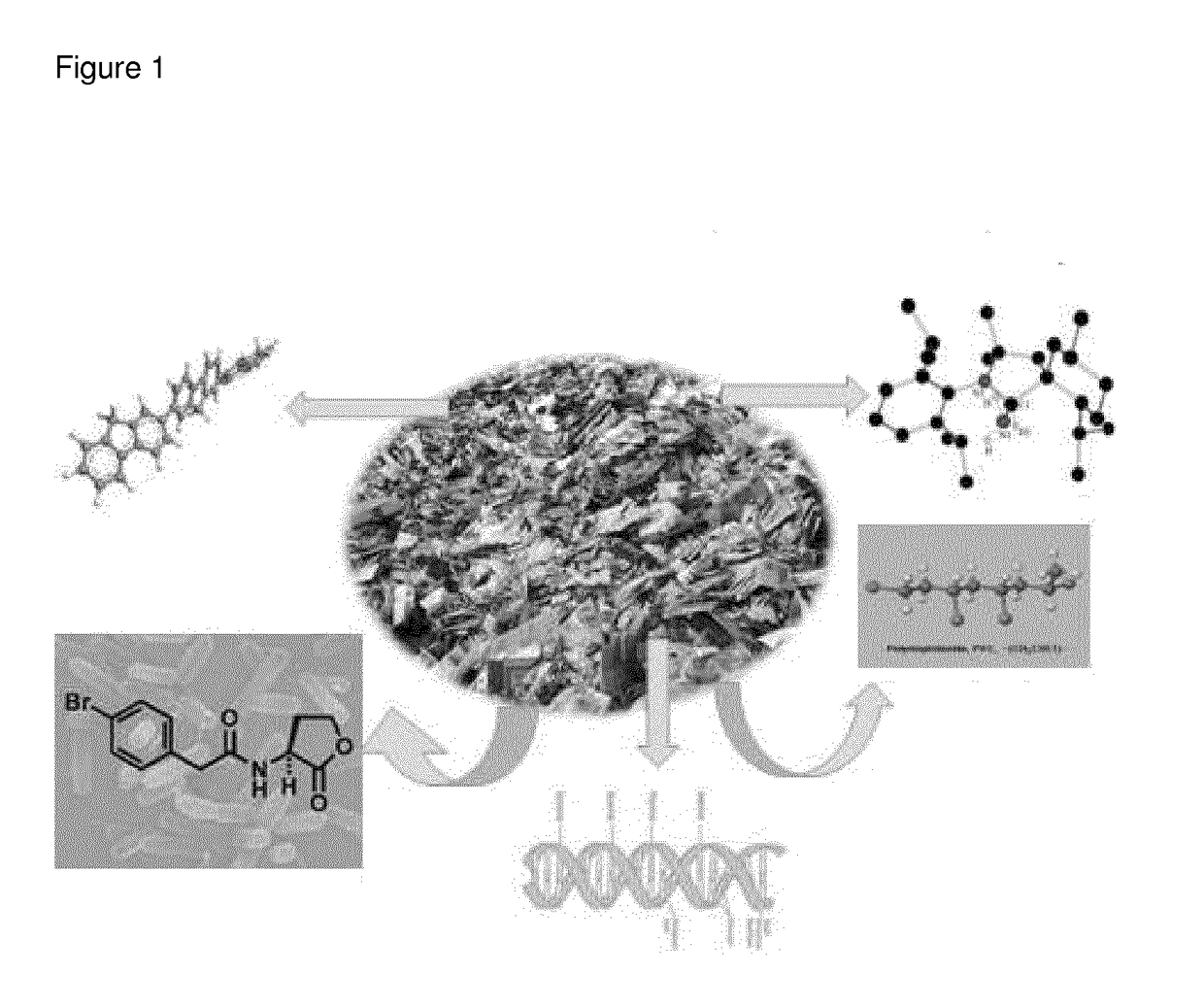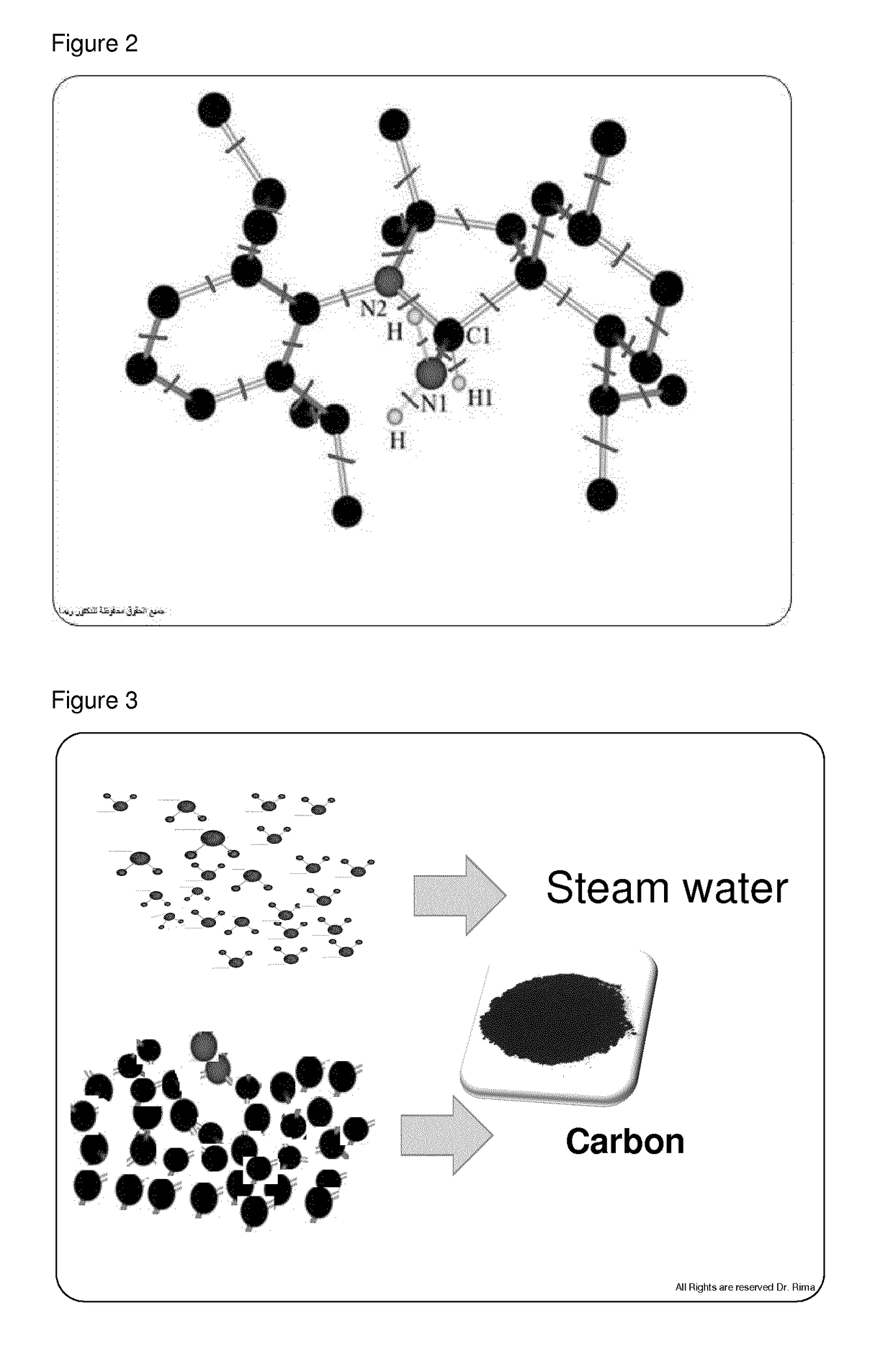Method and apparatus for rapid dry carbonization of organic waste, apparatus and catalytic system associated to the method
a technology of organic waste and carbonization method, which is applied in the direction of catalyst activation/preparation, metal/metal-oxide/metal-hydroxide catalyst, physical/chemical process catalyst, etc., can solve the problems of waste impact on the environment, the economy and society as a whole, and the emission of toxic gases, so as to achieve effective and fast heat transfer and new source of clean and hot water
- Summary
- Abstract
- Description
- Claims
- Application Information
AI Technical Summary
Benefits of technology
Problems solved by technology
Method used
Image
Examples
embodiments
[0060]The present invention relates to a method for transforming waste into carbon in a reactor, said method comprising:
[0061]a) drying the waste by submitting said waste to a pressure of at least 3 bar, and a temperature of at least 250° C.;
[0062]b) releasing the water vapor out of the reactor, and;
[0063]c) carbonizing at least partially the waste by maintaining said waste during a period of time of at least 5 minutes to a pressure of at least 3 bar, and a temperature of at least 250° C., thereby obtaining carbon; and
[0064]d) optionally separating non-organic material from the obtained carbon.
[0065]It is understood that the released vapor can be cooled to water. Optionally, distilled water can be obtained by cooling said released water vapor.
[0066]In one embodiment, in step a) and in step c), said pressure is, each independently, at least 4 bar, at least 5 bar, at least 6 bar, at least 7 bar, at least 8 bar, at least 9 bar, or at least 10 bar.
[0067]In one embodiment, in step a) and...
example 1
Preparation of the Heat Diffusing Catalytic Colloidal Solution and Internal Coating of a Reactor
[0157]Starting materials: Polysiloxane, polysilicon, Graphite 80 mesh, ethanol, and zinc powder were purchased from Merck. Deionized distilled water was locally prepared. The paint was prepared as follows: the graphite powder used in the experiment was man-made graphite with a purity of 98%. The size of the graphite powder particles and of the zinc powder particles was 5 μm or less. The filler materials were the mixture of graphite powder and zinc powder. The colloidal sol was made of 500 ml solvent (400 ml water and 100 ml ethanol) and 100 g of solute composed of graphite powder, zinc powder, and inorganic silicon (polysilicon) water-based paint (polysiloxane or sililoxan). The 100 g solute composition had 25 g graphite, 25 g inorganic silicon, and 50 g zinc. After fifteen minutes stirring, the even sol was formed. Under room temperature and atmospheric pressure, a spraying gun was utili...
example 2
Treatment of Municipal Solid Waste
[0158]Municipal waste processed with our prototype internally coated reactor proved the validity of the invention. 3.5 tons of municipal waste was collected and was inserted into the reactor which was then pressurized and sealed appropriately to avoid any leakage during the carbonization process. We used an electric heater to heat the reactor and an air compressor to maintain the appropriate pressure.
[0159]We started by increasing the pressure to 2 bars, at which moment we started heating the reactor. When internal temperature reached 150-160° C. the pressure increased to 7 bars, and the water present in the reactor started coming out of the reactor as water vapor. At this moment, sodium borohydride powder and helium gas were injected into the reactor. The sodium borohydride reacted with the water still present inside the reactor, thereby generating hydrogen. The mixture of in situ generated hydrogen and injected helium vehiculated the heat from the...
PUM
| Property | Measurement | Unit |
|---|---|---|
| Temperature | aaaaa | aaaaa |
| Temperature | aaaaa | aaaaa |
| Temperature | aaaaa | aaaaa |
Abstract
Description
Claims
Application Information
 Login to View More
Login to View More - R&D
- Intellectual Property
- Life Sciences
- Materials
- Tech Scout
- Unparalleled Data Quality
- Higher Quality Content
- 60% Fewer Hallucinations
Browse by: Latest US Patents, China's latest patents, Technical Efficacy Thesaurus, Application Domain, Technology Topic, Popular Technical Reports.
© 2025 PatSnap. All rights reserved.Legal|Privacy policy|Modern Slavery Act Transparency Statement|Sitemap|About US| Contact US: help@patsnap.com



